I aim to map an unknown territory, to deal with my own disappearance. For the past years, I’ve tried to understand death and our dying bodies through my work. I’m interested in the identification of the being with its matter, weight and transformation, and how we deal with our own demise. Tied to my future dead body, trying to be contemporaneous to my own death, I performed reflections and exercises in sculpture, writing, drawing, performance and video that helped me increase my comprehension and involvement with time, space, and decay.
Many times, I was not able to control the matter I was working with. The nature of the substances or the space were inadequate and didn’t fulfill my expectations. Facing the impossibility to cross limits, substitutions and adaptations were made. Certain impossibilities gave directions and counseling towards new beginnings and procedures. The most important was to admit that I can’t control the matter I chose. I can’t stop/prevent decay and I can’t find what death is or where is it. I’m doomed to fail, but I continued it anyways.
My body and the absence of it are the measures of my inquiries. Using my body as an archive, the relationship between practice and theory has always interested me. How your practice can give you knowledge/findings and inform your research. How one can conduct research in order to create and how one can create in order to produce research.
On my ongoing project “All Distance or None”, through walking towards a deceased person’s house on the day of their death, I use the death of the other as way to try to understand my own finitude and the condition of impermanence. The experience of death as an anticipation of its own possibility. This project is part of my studies of the body, its structure, its ruin and its absence. The body plays the role of subject and object. I want to speak of something that is not audible, and the speech would only come about through contact with the matter, the silent matter. Things that only come to exist at the moment of their disappearance.
For this project, I collect and catalogue obituaries from a local newspaper, search the deceased’s address, and with that information, use Google maps to give me the possible ways to get from my home to the deceased’s home. I treat their house as an emptied double and collect all the “lines” Google maps gives me. After choosing one way, I walk to the deceased’s home.
While I walk, I trace the line, which therefore begins to exist. The thin line between their death and mine.
Addressing experiences of being there, I reflect on practices and concepts of ephemerality, liveness and documentation. After the walks, each itinerary has its own map, photographs, audio, video, and poem, among others.
After seven years and more than one hundred walks, I have created an archive of sounds, poems, performances, images, thoughts, movements, and materials, in order to create a music score of passages, nuances and variations, where the lines create a tessitura made of traces. A contemporary Totentanz.
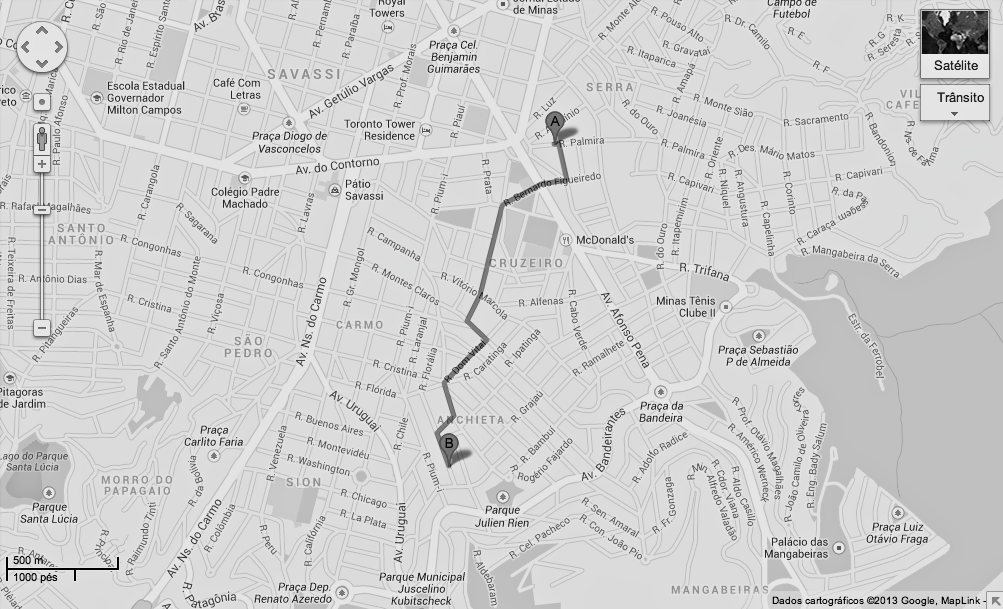
Google map
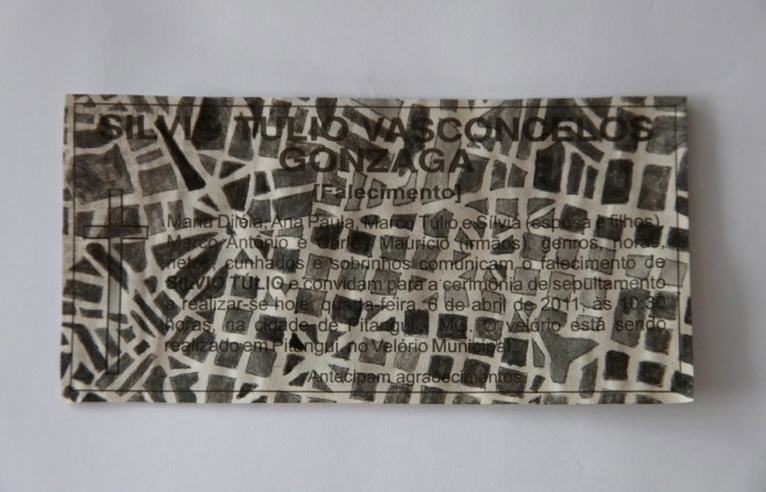
Watercolor map on obituary
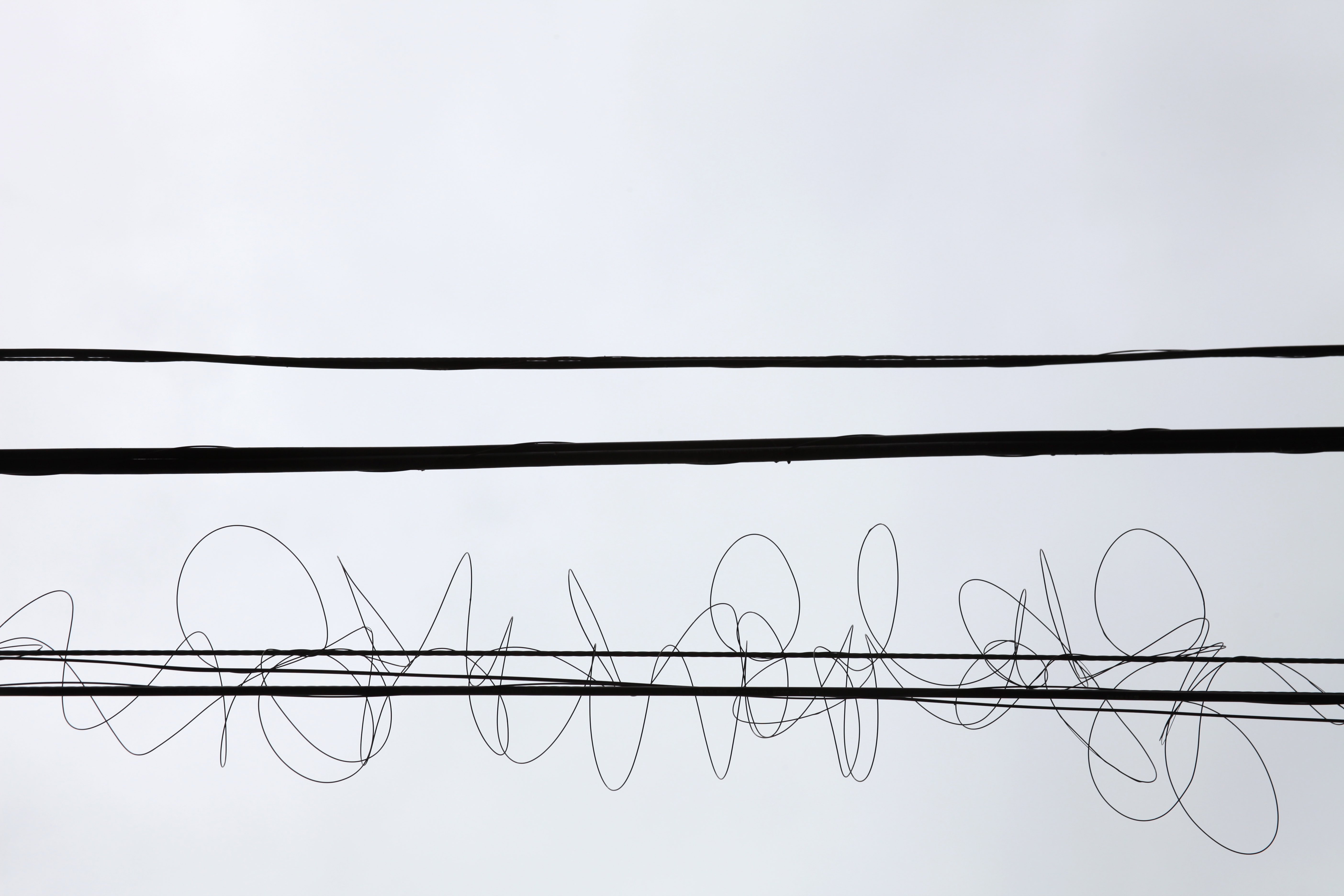
Power Lines photograph from the series Reflections on Exile
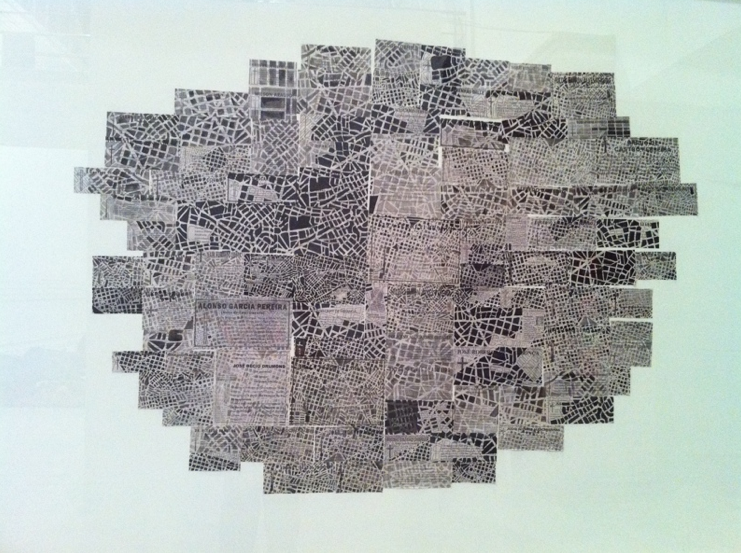
All Distance or None. Watercolor on obituaries. Map of the walks in the city of Belo Horizonte, Brazil. 170 x 230 cm

Disjecta. Installation. Maps, bones, bitumen, table
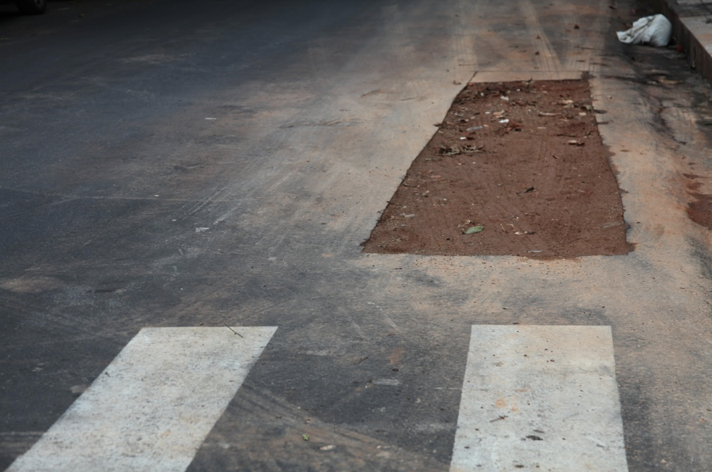
Photograph from the series Non Omnis Moriar
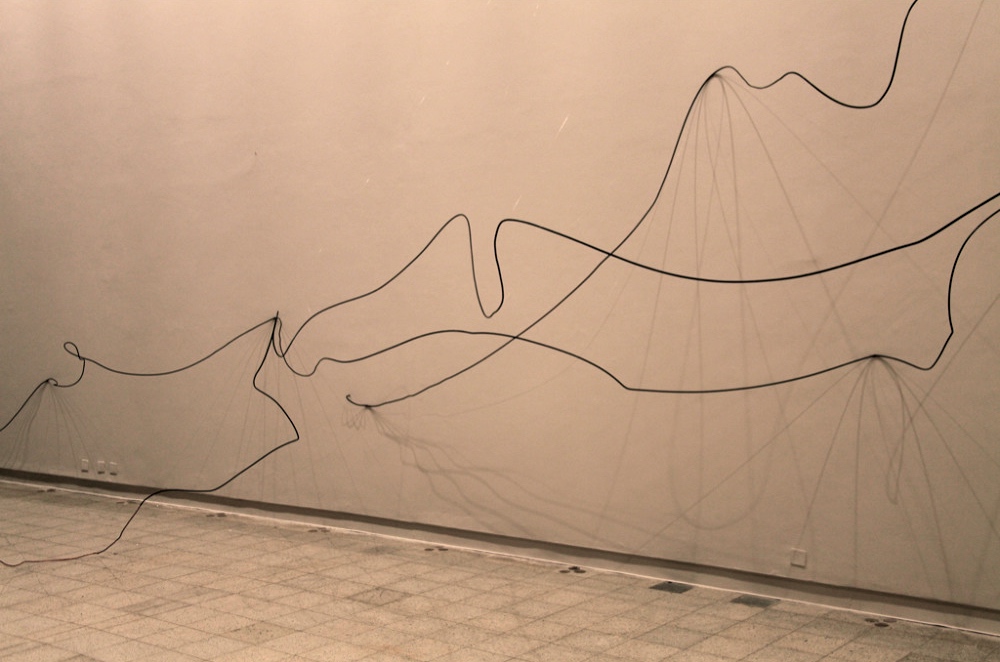
Praise of Distance. Installation. Copper, wires, rubber. 15 x 30 x 5 m

Bronze legs

Vulture 0. Performance. Photo by Flávia Bretas
**
Mariana Rocha is a visual artist, researcher and performer. She is a PhD candidate in Literary, Musical and Visual Thought at The EGS (Switzerland) and a researcher at PEI at MACBA - Museum of Contemporary Art of Barcelona (Spain). She has a BA in Fine Arts from Escola Guignard (UEMG/Brazil), specialized in drawing and sculpture; has a MA in Performance Art from Faculdade Angel Vianna (Brazil) and a MFA from Plymouth University (UK) and Transart Institute (USA/DE). Her work is interdisciplinary and deals with the body and its relation to sound, movement, decay, social contexts, architecture and landscape. www.mariana-rocha.com

